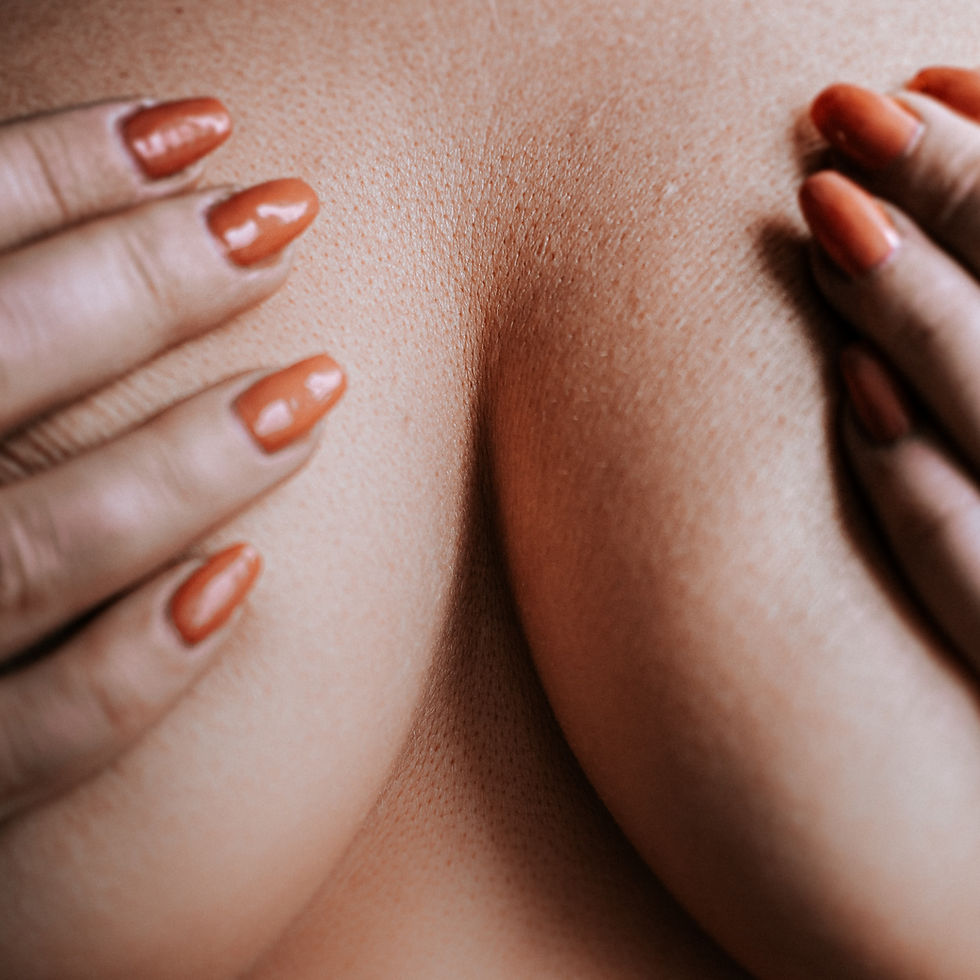IT'S BREAST CANCER AWARENESS MONTH, SO LET'S TALK ABOUT THE GIRLS!
- rkymtnmom
- Oct 7
- 4 min read

I debated whether to address this subject on the air. Still, besides being Italian Heritage Month, the one time a year Michael turns my kitchen into a war zone, making his famous Lasagna, it’s also Breast Cancer Awareness Month. So I feel obligated to address the subject. For all the men out there who may be uncomfortable with this subject, I understand and feel free to drop off this week. However, I would suggest you listen in if you have wives, daughters, mothers, or girlfriends you care about. The American Cancer Society projects approximately 316,950 new cases of invasive breast cancer and 59,080 new cases of non-invasive breast cancer will be diagnosed in U.S. women this year.
And the average American woman has about a 13% chance of developing invasive breast cancer during her lifetime. Plus, it is the second leading cause of cancer death in women in the US, exceeded only by lung cancer.
Also, though it is considered a “woman’s health issue”, male breast cancer is a real concern, with an estimated 2,800 new cases of invasive breast cancer and 510 deaths expected in U.S. men in 2025. The lifetime risk for a man to develop breast cancer is about 1 in 726. So let’s get into it.
Breast cancer is the uncontrolled growth of abnormal cells in breast tissue. Early detection through screening is key to improving outcomes, as modern treatments have significantly raised survival rates.
Symptoms
Symptoms of breast cancer can vary, and some people may not notice any changes. It is important to be familiar with how your breasts normally look and feel. Common signs to watch for include:
· A new lump or mass in the breast or armpit
· Thickening or swelling in part of the breast
· Dimpling or irritation of the breast skin, which can look like an orange peel
· Redness or flaky skin on the nipple or breast
· Any change in the size or shape of the breast
· Nipple discharge other than breast milk, including blood
· A nipple turning inward (inversion) or pain in the nipple area
Risk factors
Some risk factors for breast cancer can be controlled, while others cannot.
Uncontrollable risk factors:
· Age and sex: The risk of breast cancer increases with age. While men can get breast cancer, it is about 100 times more common in women.
· Genetics: Inherited gene mutations, particularly in the BRCA1 and BRCA2 genes, significantly increase risk.
· Family history: Having a close blood relative, like a parent or sibling, with breast cancer raises your risk.
· Dense breasts: More glandular and fibrous tissue than fatty tissue can make breast cancer harder to detect on a mammogram.
· Menstrual history: Starting your period before age 12 or experiencing menopause after age 55 means a longer lifetime exposure to certain hormones.

Controllable risk factors:
· Weight: Being overweight or obese, especially after menopause, increases your risk.
· Physical activity: A sedentary lifestyle is linked to a higher risk.
· Alcohol: Consuming alcohol is associated with an increased risk of breast cancer.
· Hormone therapy: Using combined estrogen and progestin hormone replacement therapy after menopause can increase risk.
· Reproductive history: Having your first child after age 30, never having a full-term pregnancy, or not breastfeeding can slightly increase your risk.
Diagnosis and treatment
Diagnosis of breast cancer is confirmed with a biopsy, often preceded by imaging tests. Treatment plans are personalized based on the cancer's type, stage, and other factors.
Diagnosis process:
· Imaging: Screenings may include mammograms, ultrasound, or MRI to identify potential abnormalities.
· Biopsy: A small tissue sample is removed from a suspicious area for lab testing to confirm if cancer cells are present.
· Molecular diagnosis: Lab tests on the biopsy determine the specific type of breast cancer based on its molecular receptors, which guides treatment decisions.
Treatment options:
· Surgery: A lumpectomy removes the tumor and a small amount of surrounding tissue, while a mastectomy removes the entire breast.
· Chemotherapy: Uses powerful drugs to kill cancer cells throughout the body.
· Radiation therapy: Uses high-energy beams to kill cancer cells in a specific area.
· Hormone therapy: Blocks hormones from fueling the growth of certain types of cancer.
· Targeted therapy: Drugs designed to interfere with specific molecules that help cancer cells grow.
All that said, you know my personal approach is to avoid these things in the first place. So, keeping your weight down, avoiding the excess use of alcohol, and avoiding HRT would be my suggestions to keep this at bay. And because I take a natural approach to health, I will mention Thermography, since it is a route many women choose to take.
Though your doctors will try to warn you off thermography, it is an FDA-approved test. However, according to the FDA, it’s only authorized for use as an “adjunctive” screening method. This means it should be used in addition to a primary breast cancer screening test, like mammography. My only comment would be, if it’s FDA approved, then there must be some value in the results. Just sayin.

This is a very personal choice and should be made in conjunction with your health provider. There are natural treatments for breast cancer, and if you are interested in that, why not schedule a personal consult with me to discuss your options? If you are already going through treatment for breast cancer, I do have a special meal plan to help make that process a little more bearable and keep you healthy in the meantime. Do daily self-examination, ladies. You’d be amazed at how many issues are discovered from this simple procedure. Take care of yourselves, and Let’s Get Better!




Comments